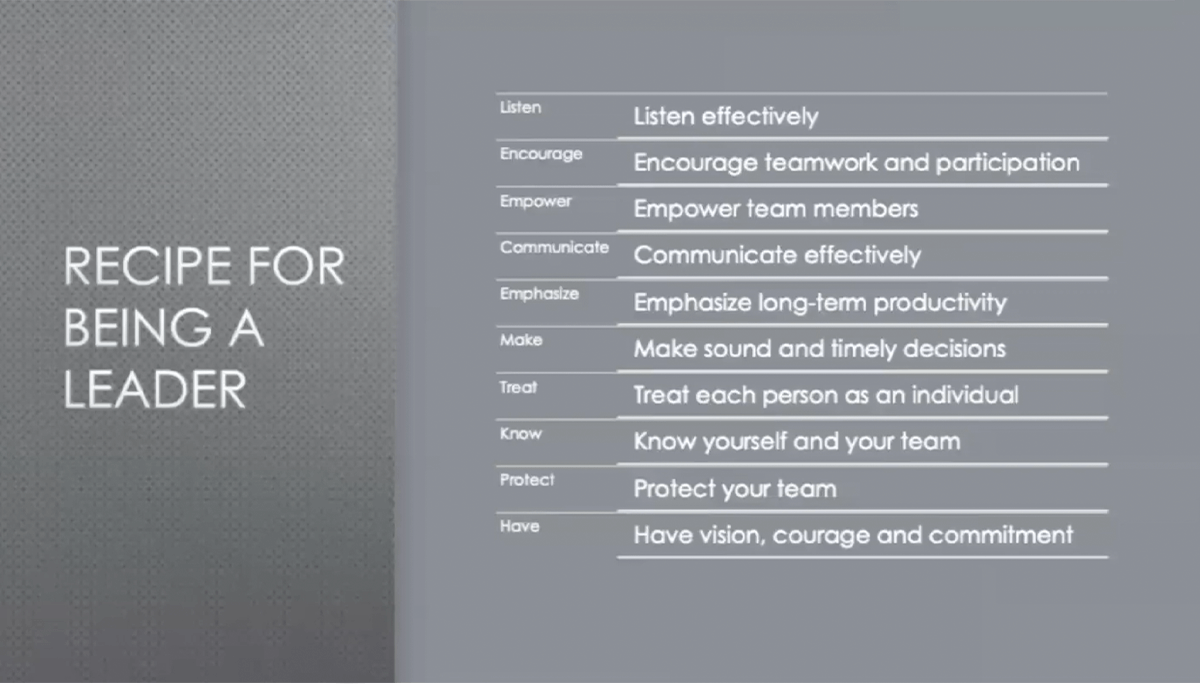- Office Hours Mon - Fri 9:00 am – 4:00 pm EST
Running a dental practice requires more than just clinical expertise and some key leadership strategies for dental practices.
Leadership in dentistry goes beyond managing daily operations. As Steve Jobs noted, “Management is about persuading people to do things they don’t want to do, while leadership is about inspiring people to do things they never thought they could.”
No matter your role, you are a leader to those working within your sphere of influence, as well as the clients or customers who trust you with their money and time.
This distinction is crucial for dental practice owners who want to elevate their teams and practices beyond the base expectations and truly thrive.
Different situations call for different approaches to leadership. Successful dental practice owners often adapt their style based on the needs of their team and specific circumstances:
What makes for exceptional dental practices? Sure, high-quality care through successful treatments are the base expectation – but what actually sets those practices apart? Leadership behaviors are a key factor in determining the success of any dental practice.
Listening Effectively: Your patients come to you for expertise, so your words matter. But even more than what you say is how you listen. Make time for meaningful conversations with team members outside of “drive-by” patient interactions.
Encouraging Teamwork: What is the culture like in your practice? Do people feel valued and empowered beyond their role expectations? Create an environment where team members feel comfortable contributing ideas and solutions – and you’ll create a feedback loop of success.
Empowering Your Team: Captains give the orders, but every single member of the team plays a part in the final victory. Do you trust your people to make decisions in low and high-impact situations?
For example, when following up with a patient who accepted $4,500 of treatment but declined a night guard, empower your team to have meaningful conversations about protecting that investment.
Communicating Clearly: Dental practices live and die by how their people communicate. Establish regular, structured communication channels and document important processes so that everyone knows what to do and who to turn to when they have a question.
When having difficult conversations with team members, use the ‘crucial conversations’ technique: Have the discussion, come to an agreement, set a specific timeline for improvement, and document the conversation and next steps.
Making Timely Decisions: Avoid analysis paralysis by setting clear timelines for implementing changes. This can mean making quick decisions focusing on quality or taking more time to carefully consider all options.
An example could be setting a 90-day trial period for new processes. Each time, evaluate results and make adjustments rather than abandoning ship at the first sign of difficulty.
The above leadership behaviors can empower even the busiest dental practices to create winning patient experiences. But simply doing things well is only part of the equation – you need to know where you are going as a practice.
A clear vision serves as your practice’s North Star, guiding every decision and action. What are some key elements of a unified practice vision?
Trimming the sails toward a common goal requires, first and foremost, knowing what that goal is. A clear direction gives your team a sense of purpose and meaning in their work. This could be a specific patient outcome you want to achieve or an overall mission statement for the practice.
A unified vision should align with your practice’s core values. These values serve as guiding principles for how your team operates and interacts with patients and each other. Your vision should reflect these values and reinforce them.
A good vision allows flexibility and adaptability as the industry changes and new challenges arise. It should not be rigid or fixed but allow room for growth and evolution. Only when a vision is flexible can it guide your team through times of uncertainty and change.
With your leadership behaviors and practice vision in mind, it’s time to start setting the course for your practice’s growth. Successful dental practices operate with clear, measurable objectives.
One of the best ways to create and implement goals for your practice is via the SMART method. This involves creating goals that are:
For example, your dental practice may aim to increase patient satisfaction by 10% within the next six months. This goal is specific, measurable, achievable, results-focused, and has a clear timeline for completion.
When setting financial goals, factor in specific planned expenses: $40,000 for front office renovations, $20,000 for team bonuses, new equipment purchases, and desired salary increases. Then, reverse engineer your production goals to support these specific investments in your practice’s future.

How will you know if your SMART goals are being met? You’ll need key performance indicators (KPIs) to track and measure your progress. Some common KPIs for dental practices include:
Make sure to track and analyze these KPIs regularly to determine where your practice excels and where there is room for improvement.
Going back to our SMART goal of increasing revenue by 10% in the next six months, the average treatment plan acceptance rate is one KPI that can help measure this goal. This measures how many patients accept and progress with the recommended treatment plans.
Other potential KPIs could include:
Case acceptance rates vary by treatment type – so be careful when setting this KPI. While filling and crown acceptance might reach 75%, complex cases over $10,000 might see 30% acceptance rates – and both can be healthy metrics depending on your practice model.
Documentation isn’t just about meeting regulatory requirements – it’s the backbone of practice consistency and growth.
Every key process in your practice should be documented, from answering phones to handling patient financials. Ask yourself: “If my front office team won the lottery and left tomorrow, could my clinical team step in and handle essential functions?”
For instance, document specific scripts and procedures for handling cancellations. Your clinical team should be able to handle a cancellation call just as effectively as your front office team. Without documented systems, there’s no consistency in handling these crucial practice moments.
Move beyond traditional job descriptions to implement role scorecards that measure success on a 1-5 scale. Remember: no one is a perfect 5, and that’s okay. Meeting expectations (3) means doing the job well while providing room for growth and development.
Schedule quarterly growth conferences with team members to:
These aren’t just performance reviews – they’re opportunities to demonstrate your investment in each team member’s professional development while ensuring accountability for practice success.

One of the most challenging aspects of running a successful dental practice is managing change – and change will come as you adjust your leadership style.
As the saying goes, “Get comfortable being uncomfortable.” This mindset is essential for practice growth and development, whether implementing new technology, adjusting team processes, or enhancing patient care protocols.
Consider this: When practices shift from 24-hour to 48-hour appointment confirmation windows, team members often resist, worried that patients will forget appointments or be inconvenienced.
However, practices that embrace this uncomfortable change typically see improved schedule stability and reduced last-minute cancellations within 3-6 months. The key is allowing enough time for new processes to prove their worth rather than reverting to old habits at the first sign of discomfort.
Effective leadership is the foundation of a successful dental practice. By focusing on clear communication, team empowerment, and systematic improvement, you can create a practice that delivers excellent patient care while maintaining high team satisfaction and practice profitability.
Remember, becoming an effective leader is a journey, not a destination. Start implementing these strategies gradually, and be patient as your team adapts to positive changes. The result will be a more efficient, profitable practice and a more satisfied team.

ADA CERP is a service of the American Dental Association to assist dental professionals in identifying quality providers of continuing dental education. ADA CERP does not approve or endorse individual courses or instructors, nor does it imply acceptance of credit hours by boards of dentistry.
Concerns or complaints about a CE provider may be directed to the provider or to the Commission for Continuing Education Provider Recognition at ADA.org/CERP.